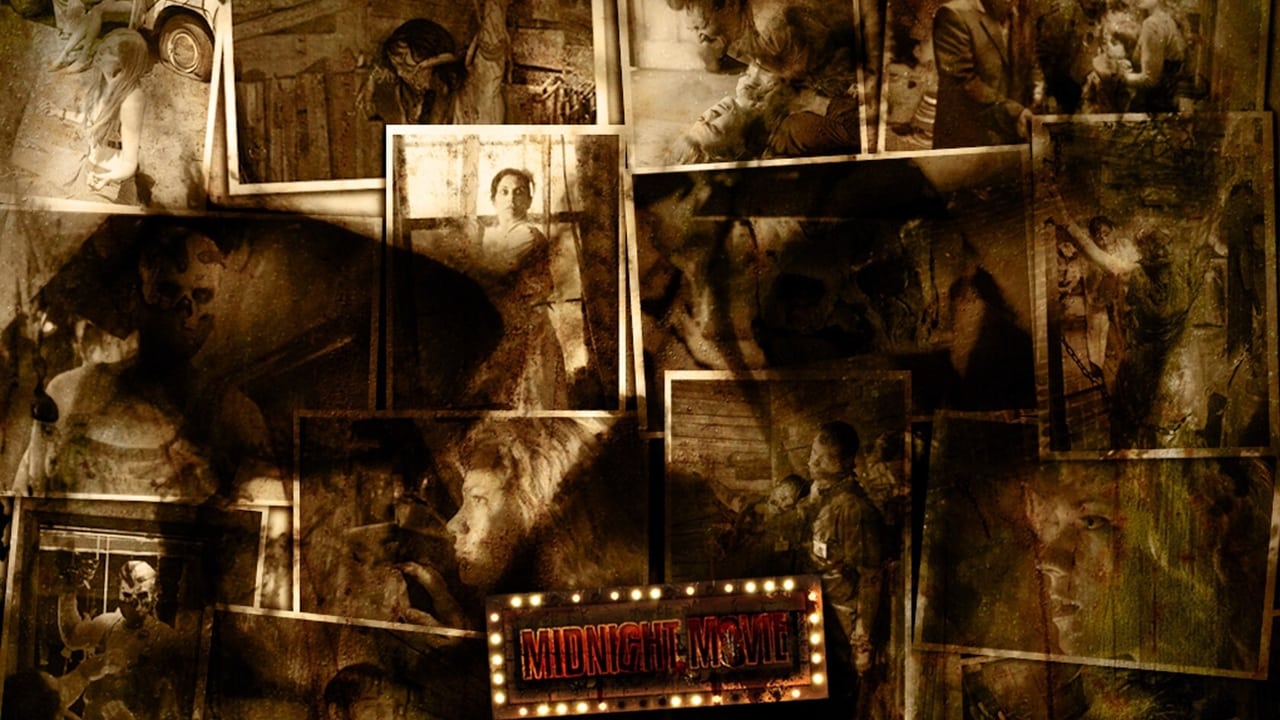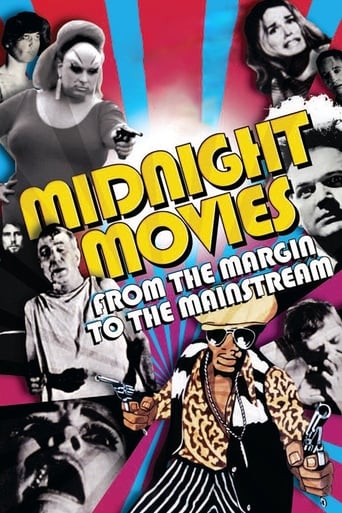

Although I seem to have had higher expectations than I thought, the movie is super entertaining.
... View MoreIt's easily one of the freshest, sharpest and most enjoyable films of this year.
... View MoreThe tone of this movie is interesting -- the stakes are both dramatic and high, but it's balanced with a lot of fun, tongue and cheek dialogue.
... View MoreThe movie is made so realistic it has a lot of that WoW feeling at the right moments and never tooo over the top. the suspense is done so well and the emotion is felt. Very well put together with the music and all.
... View MoreAlthough "Midnight Movies" still exist today they are very scarce since the early 80's when video tape became popular and changed everything. Midnight movies are cult movies that cater to a certain kind of audience. This documentary deals with a few of the most successful Midnight Movies ever made, back when certain audiences were hungry for something different in their movie going. Movies featured are El Topo, Night of the living dead, Pink Flamingos, The Harder they come, The Rocky Horror Picture Show and Eraserhead. Back when they came out they were considered different than anything that came before and even hold up today. The documentary explains how these movies became popular in the midnight time slot even though some of them were tried at regular time showings. John Waters' Pink Flamingo's had a ten year straight run while The Rocky Horror Picture Show is the reigning champ with midnight screenings today where people dress as the characters and sing along to the catchy tunes in the film. There are people who have seen the film over 1000 times, not on DVD, but in an actual theater. Eraserhead by David Lynch was only a success after a year of midnight showings. It would be impossible for this to happen today as movies need to be an immediate hit. Interesting movie for those interested in a different kind of cinema. Good Stuff!
... View MoreThe collection of films gathered in this documentary is centered around the cult of the midnight movies, a series of films in the 70s which were not only experimental in form and shocking in content, but also presented a different type of viewing experience in the decade between the flower power 60s and the electronic explosion of the 80s. All these films became cult objects and enjoyed success which was not necessarily, or not only commercial, but also focused on a type of non-mainstream audience. The films themselves were very unequal judged on the art scale, with three of the six being important films, to be remembered in any history of the moving pictures art, and the other three closer to the trash pan. It is however interesting to see the authors of the movies looking back to the time of the making and the critics trying to put them in perspective. At the end it is not so much the documentary material that stays with the viewer but the reflection process that makes us think about the relationship between art, viewing conditions, experiment and success.
... View MoreThis alliteratively titled film is more about the margin than the mainstream. In fact, the movies it examines were far beyond the margin. Are they still? That's an important question to which I don't know the answer.The birth of the midnight showing of cult films started in the early 1970s, in a political climate that was ripe for disillusioned, ironic film goers to pour their unrealized idealism into films that made heroes out of freaks. Six of those movies are highlighted in this film, which takes a non-flashy, straightforward talking head approach to examining how the movies were made, distributed, and received. Luckily the talking heads are the directors and the cinema owners who dared to show these films, often for years before they gathered a following. The films include, in temporal order, Jodorowsky's El Topo, Romero's Night of the Living Dead, Perry Henzell's The Harder they Come, John Waters' Pink Flamingos, Richard O'Brien's Rocky Horror Picture Show, and Lynch's Eraserhead.As one person in the film said, and I'm roughly quoting here: "A director doesn't make a cult film, an audience makes a cult film." and that's essentially what brings these films together. The right political climate, the right tone, the right distributor, the right director, essentially everything coming together to create the perfect word-of-mouth hit. Samuels chooses to allow critics to discuss the films but more importantly the directors themselves are on hand to examine and explain their work, thus showing directly the different thought processes that took place, but also indirectly how each personality is manifest directly in the film! Waters IS Pink Flamingos, O'Brien isn't just Riff Raff but also a huge chunk of Rocky, Lynch is industrial Philadelphia. These films are the directors and vice-versa precisely because they were low budget, underground, and made with such verve and dedication. I would daresay these directors are closer to their films than big budget, mainstream directors. That makes us closer to the films too.Besides personality, a different aspect of film-making is described in each film. For example, for El Topo Jodorowsky describes how he combined different genres (spaghetti western, horror, coming of age, etc.) . Romero discusses shooting the closing scenes of his film in a style similar to the news reels of Vietnam and the other news shows of the day, with their growing depiction of the day-to-day senseless violence seemingly affecting the country at large. Waters describes the importance of filth as a theme and the Charles Manson trial as an influence on his films, while O'Brien and others discuss the difference between the stage version of Rocky versus the film (interestingly enough, audiences begin to co-opt the film and create their own stage version- thus bringing the film back to its theatrical roots).This is what a documentary should be, the documentarist should allow the story to tell itself, not be the story itself. I'm no firm believer in captured objectivity, but I still fundamentally believe in a documentary's pedagogic powers. I want to learn something, dammit! I did here. And it also reminded me of what I love about cult movies and anything cult in general. Though seemingly marginal, cult has the power to make a person feel very much not alone. The receivers of that bit of culture are sharing something that the mainstream just can't and never will get. That knowledge in and of itself brings people together. Unfortunately, as the people in the film point out, this cult culture has become socially and materially acceptable, and what was once marginal is now hopelessly mainstream.Leaving the theater, I just couldn't believe that out of the six films presented in the documentary, I had only seen Pink Flamingos and Rocky Horror Picture Show, and neither one at a midnight showing! Oh, the shame!cococravescinema.blogspot.com
... View MoreAn excellent documentary feature on the backgrounds and effects of cult classics from the 1970s when underground movie groups popped into the limelight and in theaters as cinematic accessibility became more pronounced and prevalent. Movie classics (to some, not me) "Night of the Living Dead" (the 1968 original), "El Topo", "Pink Flamingos", "The Harder They Come", "The Rocky Horror Picture Show" and "Eraserhead" are the focal points here as we have tons of archive footage and interesting interviews from the films' major directors (John Waters, David Lynch, George Romero and others) and insight from dependable critic Roger Ebert. The picture is made better than the movies that are discussed and quickly becomes a magnet for some that are not familiar with the movies revisited. The only drawback here is that "Midnight Movies" will make some want to see the aforementioned films from the 1970s. Unfortunately, this flick makes its subjects look much more appealing than they actually are. 5 stars out of 5.
... View More